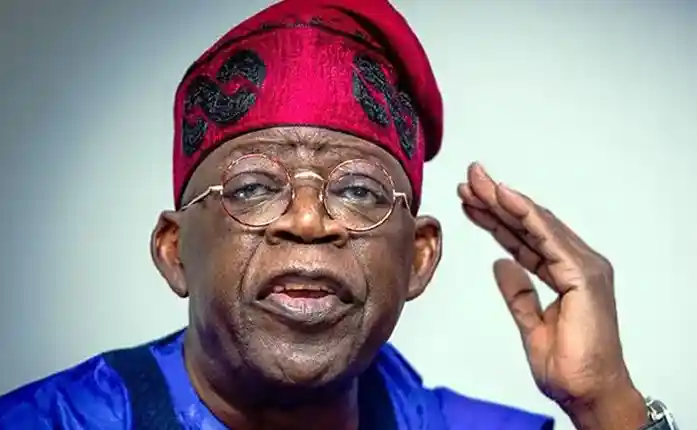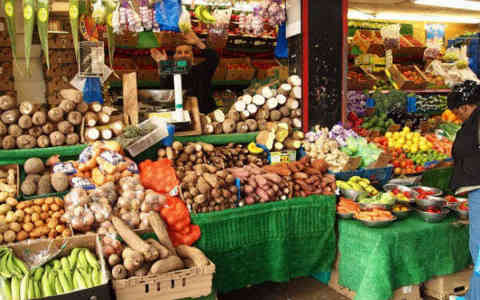Debt Servicing Consumes Over 99% of Nigeria’s Revenue
The fiscal challenges facing Nigeria in the 2022 financial year have become increasingly dire, as recent data reveals that a staggering N4.23 trillion out of the total revenue of N4.26 trillion available for budget financing in the first three quarters of last year was allocated to debt servicing.
Read Also Breaking News: Popular LG Chairman, Vice die days apart (photos)
This alarming figure, disclosed in the budget performance report by the Office of the Accountant General of the Federation (OAGF) and the Budget Office, has pushed the country’s debt service to revenue ratio to a record-high of 99.2%. The ratio surpasses the estimated 80.6% stated in the 2023 budget document, which indicated that the Federal Government had already spent N5.24 trillion on servicing its debt obligations to both local and foreign creditors.
Alarming Debt Figures and Revenue Shortfalls
The debt service to income ratio exceeded 100% in the first four months of the year but gradually subsided thereafter. However, experts caution that without radical reforms, this trend will continue to worsen over the next five years, with the debt service cost projected to reach a staggering 160% by 2027.
The post-COVID-19 era witnessed a spike in the ratio, peaking at 76% in 2021. Although the government claims that its debt accumulation has been modest, the lack of revenue growth to match spending has resulted in this challenging situation.
Out of the debt service cost for the first three quarters, 28% (equivalent to N1.2 trillion) went towards the controversial ways and means (W&M) facilities granted by the Central Bank of Nigeria (CBN).
Read Also We were paid N50 million to kill Apostle Suleman – Suspect confesses
Domestic debt accounted for N2.15 trillion, while N871 billion was allocated to foreign debt servicing during the nine-month period. The actual cost of debt servicing exceeded the approved budget’s prorated estimate by 41.9%.
Growing Debt Liabilities and Implications
Despite the concerning levels of debt servicing, the government has continued its borrowing spree, accumulating N3.41 trillion in fresh debt liabilities during the period. Approximately 85% of these new loans, totaling N2.9 trillion, were sourced from the local debt market.
This growing reliance on the local market, combined with a shrinking international market and high-interest rates, is taking its toll on the economy. Experts warn that such increased reliance on the government for capital mobilization is crowding out critical private sector investments necessary for job creation and economic growth.
Revenue Performance and Neglected Capital Projects
As in previous years, revenue performance for the first three quarters of the year stood at approximately 70%. Despite a prorated revenue target of N6.18 trillion, only N4.25 trillion (69%) was realized during the period, significantly hampering annualized income at N5.7 trillion. Capital projects received minimal attention, with total spending for the nine months amounting to only N1.68 trillion, approximately 38% less than the prorated budget of N2.7 trillion.
Unlike previous periods when recurrent appropriations exceeded estimates, actual spending in the first three quarters fell short by 17% of the projected N4.53 trillion.
Escalating Fiscal Deficit and Cumulative Debt
The fiscal deficit for the period reached N2.6 trillion, contributing to a cumulative total of N25.5 trillion in fiscal deficits under ex-President Muhammadu Buhari’s administration from 2015 to 2021. The deficit for 2022 was projected at N7.35 trillion, exacerbating Nigeria’s grave fiscal position.
Inflation Rate Surpasses Expectations, Yet Fuel Subsidy Removal Raises Questions
Nigeria is currently grappling with food-induced inflation, with headline inflation reaching 22.79% last month. While higher than the 22.4% recorded in May, it fell short of the projected 30% inflation rate for June, as estimated by experts, including the former Statistician General of the Federation, Yemi Kale. Analysts are puzzled by the inconsistency between the inflation figure and the significant spike in fuel prices following the removal of fuel subsidies
The near 300% increase in fuel prices and over 100% rise in transportation costs were expected to contribute to a higher consumer price index (CPI) reading.
Doubts Arise Over Inflation Figures and Integrity of Reporting
Economists have expressed doubts about the accuracy of the June 2023 inflation figures and called for an integrity test of the National Bureau of Statistics (NBS)’s reporting of the CPI. Despite the significant price increases caused by the fuel subsidy removal, experts find it puzzling that the inflation rate remains relatively low.
The NBS acknowledges that the June CPI numbers may not fully reflect the impact of the fuel subsidy removal and exchange rate unification policies, as data collection typically stops around the middle of the month. The NBS expects the full effect of these policies to manifest in subsequent months.
Calls for Production and Energy Sector Reforms to Tackle Inflation
To address the escalating inflation, experts emphasize the need for Nigeria to prioritize the production of goods and services. They highlight the country’s heavy reliance on consumption and insufficient production as a significant problem.
They argue that increased investment in the energy sector, including the immediate start of production at the Dangote refinery, could reduce the cost of transportation for food items and subsequently lower prices.
Additionally, efforts to improve security and support farmers in returning to their fields are crucial steps toward reducing food prices and tackling inflation.









